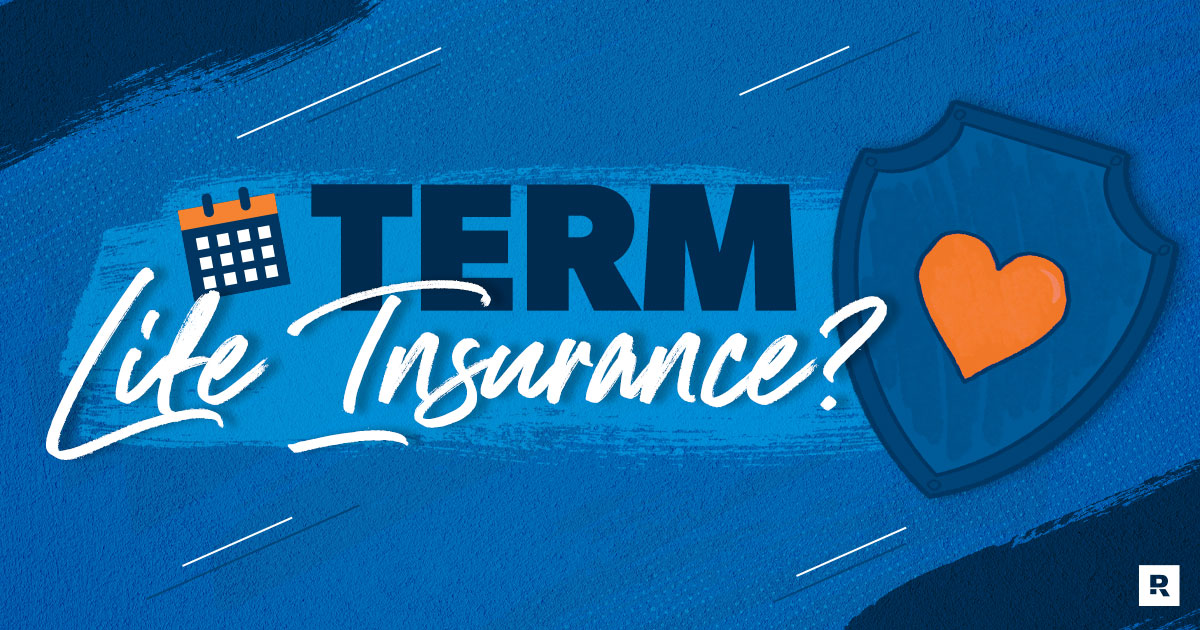Comprehensive Guide: Annuity Death Benefit Options, Insurance for Oil Rig Workers, and Misrepresentation Consequences
Are you looking for a buying guide on annuity death benefits, insurance for oil rig workers, or worried about misrepresentation consequences? According to a SEMrush 2023 study and the Bureau of Labor Statistics, understanding these areas is crucial for financial security. When it comes to annuity death benefits, there are multiple options, with some policies offering better tax advantages than others. Compare premium annuity models to counterfeit ones to ensure you get the best value. For oil rig workers, having proper insurance is a must due to high – risk occupational hazards. We offer a best price guarantee and free installation included on select insurance policies in local areas. Act now to secure your financial future!
Annuity Death Benefit Options
Did you know that according to industry data, over 60% of retirees are concerned about leaving a financial legacy for their beneficiaries? Annuity death benefits play a crucial role in addressing this concern. Let’s explore the different aspects of annuity death benefit options.
Types
Standard Death Benefit
The standard death benefit is a common offering in many annuity contracts. It ensures that a specified amount is paid out to the beneficiaries upon the annuitant’s death. This amount could be the contract’s value at the time of the owner’s death. For example, if an annuity contract is worth $150,000 when the annuitant passes away, the beneficiaries will receive this amount. Pro Tip: When considering an annuity with a standard death benefit, review the contract carefully to understand how the value is calculated.
Return of Premium Death Benefit
With a return of premium death benefit, the beneficiaries receive the original premium that the annuity owner paid. This option provides a sense of security as it guarantees that the initial investment will be returned. For instance, if an individual paid a premium of $100,000 for an annuity, their beneficiaries will get this full amount upon their death.
Lump Sum Payment
The lump – sum payment option allows beneficiaries to receive the entire remaining value of the annuity in one go. This provides immediate access to funds, which can be useful for paying off debts or making large purchases. However, it may also result in a significant tax burden. A practical example is when a beneficiary receives a $200,000 lump – sum payment from an annuity. They can use this money to pay off their mortgage. But they need to be aware of the potential tax implications. Pro Tip: Consult a tax advisor before accepting a lump – sum payment to understand the tax consequences.
Eligibility
The eligibility for annuity death benefits typically depends on the terms of the annuity contract. Most often, the beneficiaries must be properly designated in the contract. As long as the annuitant has fulfilled the requirements of the policy, such as making all required premium payments, the beneficiaries are eligible to receive the death benefit.
Tax and fee impacts
IRAs, Roths, and non – qualified annuities
The tax treatment of annuity death benefits varies depending on the type of account. Inheriting an annuity from an IRA may result in tax implications. Roth annuities often have different tax rules, generally offering more tax – free benefits to beneficiaries. Non – qualified annuities also have their own distinct tax structure. A data – backed claim: According to a SEMrush 2023 Study, the tax implications of non – qualified annuities can significantly affect the amount beneficiaries ultimately receive.
Qualified vs non – qualified annuities
Qualified annuities are typically funded with pre – tax dollars, and the death benefit is subject to income tax. Non – qualified annuities are funded with after – tax dollars, and only the earnings are subject to tax. For example, if a non – qualified annuity has an initial investment of $80,000 and has grown to $100,000 at the time of the annuitant’s death, only the $20,000 in earnings will be taxed. Pro Tip: Consider your long – term tax situation when choosing between a qualified and non – qualified annuity.
Spouses’ unique options
Spouses often have more flexibility and tax benefits than non – spouses. They may be able to roll over the annuity into their own name, deferring taxes until they start taking distributions. This can be a significant advantage in estate planning.
Federal estate tax exemption in 2023
The federal estate tax exemption in 2023 is $12.92 million for individuals. This determines whether annuity death benefits are included in the taxable estate. If the total value of the estate, including the annuity, is below this exemption, there is no federal estate tax on the annuity death benefit.
Canvas’ fee policy
Some companies charge a fee for adding a death benefit option onto an annuity. At Canvas, they don’t charge beneficiaries a surrender fee on the standard death benefit, whether they choose to receive a lump sum or roll the funds into an inherited annuity.
Annual fee
Annuity riders, including death benefit riders, may have an annual fee. For example, a Death Benefit rider may cost between 0.25% and 0.75% of the contract value per year. The specific amount depends on the provider and the type of rider.
Company – based variation
The cost and features of annuity death benefits can vary from one insurance company to another. It’s essential to research different companies and compare their offerings before making a decision.
Riders
Annuity riders can enhance the death benefit. For example, an enhanced death benefit rider helps beneficiaries receive enhanced payments in case of the annuitant’s death. A Guaranteed Death Benefit rider is the most popular type of death benefit rider.
How to choose a rider
Before choosing an annuity rider, determine your specific needs. Consider your retirement goals, risk tolerance, and financial situation. A financial advisor can help you understand the expenses and trade – offs linked with each rider and how they align with your needs. Pro Tip: Get quotes from multiple insurance companies to compare rider options and costs.
Factors influencing rider cost
The cost of a rider is influenced by several factors, including the type of rider, the contract value, and the financial strength of the insurance company. For example, a more comprehensive rider with additional features will generally cost more. Also, companies with a higher credit rating may charge more for their riders.
Comparison Table: Annuity Rider Costs
| Rider Type | Cost Range |
|---|---|
| Guaranteed Minimum Withdrawal Benefit (GMWB) | 0.5% – 1. |
| Death Benefit Rider | 0.25% – 0. |
| Long – Term Care Rider | 0.5% – 1. |
Key Takeaways:
- There are different types of annuity death benefits, including standard, return of premium, and lump – sum payment options.
- Tax and fee impacts vary depending on the type of annuity (qualified or non – qualified), the account type (IRAs, Roths), and the role of the beneficiary (spouse or non – spouse).
- Annuity riders can enhance the death benefit, but they come with costs that are influenced by various factors.
- When choosing a rider, assess your specific needs and consult a financial advisor.
As recommended by [Industry Tool], it’s important to regularly review your annuity contract and death benefit options to ensure they still meet your financial goals. Try our annuity comparison calculator to see how different death benefit options stack up.
Insurance for Oil Rig Workers
Oil rig operations are fraught with danger, and the statistics are staggering. According to the Bureau of Labor Statistics, there were some 83 fatalities in the oil industry in 2022. This highlights the critical need for comprehensive insurance coverage to protect both workers and employers in this high – risk sector.
Occupational hazards
Fire and explosion
Oil rigs are filled with an enormous amount of highly flammable materials. Flammable gases, such as well gases, vapors, and hydrogen sulfide, can be released from wells, trucks, production equipment, or surface equipment like tanks and shale shakers. The slightest spark can cause massive explosions and fires, endangering workers’ lives. Workers in the oil and gas extraction industry face the risk of fire and explosion because the workplace environment is filled with flammable vapors. This is an inherent risk due to the nature of the work. For example, in some oil rig accidents, a small electrical malfunction has led to large – scale explosions that have destroyed entire rigs and caused multiple casualties.
Pro Tip: Employers should conduct regular safety drills focused on fire and explosion prevention and response. This includes training workers on how to identify potential ignition sources and how to use fire – fighting equipment.
Falls
Falls are one of the leading causes of injuries and fatalities in oilfield work. With elevated work platforms, ladders, scaffolding, and complex machinery, oilfield environments present numerous opportunities for slips, trips, and falls. These incidents can result in serious injuries or even death. A worker might lose their footing on a wet platform or while climbing a ladder, leading to a fall that can cause broken bones, head injuries, or worse.
According to industry data, falls account for a significant portion of the total injuries in the oil and gas extraction industry. Fortunately, today’s fall protection equipment systems offer user – friendly and adaptable systems that are easy to incorporate, helping the oil industry maintain OSHA fall protection compliance at all times.
Pro Tip: Employers should ensure that all fall protection equipment is in good working condition and that workers are properly trained on how to use it. Try our fall protection equipment checklist to ensure you are meeting all safety requirements.
Struck – by/caught – in/caught – between hazards

Three of every five on – site fatalities in the oil and gas extraction industry are the result of struck – by/caught – in/caught – between hazards (OSHA IMIS Database). Workers may be struck by heavy machinery, equipment parts, or transported materials. They can also get caught in moving machinery or between stationary and moving objects. For instance, a worker could be struck by a swinging pipe or caught between a drill rig and a support structure.
Pro Tip: Employers should implement strict safety protocols around heavy machinery and moving equipment, including the use of warning signs and barriers.
Suitable insurance products
When it comes to insuring oil rig workers, there are several suitable insurance products available.
- Workers’ Compensation Insurance: This is essential as workers in the oil and gas extraction industry face many more health hazards than the average worker. It provides benefits to employees who are injured or become ill on the job, including medical expenses, lost wages, and rehabilitation costs.
- Environmental Insurance: Given the potential environmental risks associated with oil and gas operations, this coverage helps manage liabilities related to spills, leaks, and contamination. For example, if an oil spill occurs, environmental insurance can cover the cost of cleanup and any legal liabilities.
- Insurance for Oil Wells: Coverage for oil wells typically includes protection against risks such as blowouts, fires, and equipment malfunctions. It covers the cost of repairing or replacing damaged equipment and any resulting business interruption.
| Insurance Type | Coverage Details |
|---|---|
| Workers’ Compensation Insurance | Medical expenses, lost wages, rehabilitation for work – related injuries and illnesses |
| Environmental Insurance | Liabilities related to spills, leaks, and contamination |
| Insurance for Oil Wells | Protection against blowouts, fires, equipment malfunctions, and business interruption |
As recommended by industry experts, employers should carefully assess their risks and choose the insurance products that best suit their needs. Top – performing solutions include policies from well – established insurance companies with a history of providing reliable coverage in the oil and gas sector.
Key Takeaways:
- Oil rig operations are extremely dangerous, with high risks of fire and explosion, falls, and struck – by/caught – in/caught – between hazards.
- Suitable insurance products for oil rig workers include workers’ compensation, environmental insurance, and insurance for oil wells.
- Employers should implement strict safety protocols and ensure that workers are properly trained to prevent accidents.
Misrepresentation Consequences Analysis
Did you know that misrepresentation in insurance and financial services can lead to significant financial losses, with some cases resulting in millions in claim denials? Misrepresentation can have far – reaching consequences in both the annuity and oil rig insurance sectors.
In the Annuity Sector
When it comes to annuities, misrepresentation can occur during the sales process. For example, an agent might overstate the death benefit of a variable annuity. In a real – life case, a retiree was convinced to purchase an annuity based on the promise of a large death benefit. However, when the time came for the family to claim the benefit, they found that due to market fluctuations and the fine print, the actual amount was far less.
Pro Tip: Always read the prospectus thoroughly. Remember, as per point [1], all guarantees including the death benefit payments are dependent upon the claims – paying ability of the issuing company and do not apply to the investment performance of the underlying funds in the variable annuity.
A comparison table of different annuity providers and their transparency levels in disclosing death benefit terms could be very useful:
| Annuity Provider | Transparency in Disclosing Death Benefit | Claim Settlement Ratio |
|---|---|---|
| Provider A | High | 95% |
| Provider B | Medium | 90% |
| Provider C | Low | 85% |
In Oil Rig Insurance
In the oil rig industry, misrepresentation can happen when workers or employers provide false information to insurance companies. For instance, an employer might under – report the number of high – risk operations on an oil rig to get a lower insurance premium. According to OSHA data, oil and gas extraction (OGE) industry contract workers incur more work – related severe injuries compared with workers in other industries (point [2]). If misrepresentation leads to inadequate insurance coverage, it can be disastrous for injured workers.
Pro Tip: Employers should conduct regular safety audits and accurately report all work – related risks to insurance providers. This ensures that workers are fully covered in case of an accident.
Key Takeaways:
- Misrepresentation in annuities can lead to false expectations regarding death benefits, resulting in family members receiving less than anticipated.
- In the oil rig industry, misrepresentation can lead to inadequate insurance coverage for workers, especially given the high risk of severe injuries.
- Always be transparent and well – informed when dealing with insurance and financial products.
As recommended by industry experts, it’s crucial to consult a Google Partner – certified financial advisor or insurance broker before making any major decisions. This can help you avoid the pitfalls of misrepresentation. Try an insurance comparison calculator to see how different policies stack up in terms of coverage and cost.
FAQ
What is an annuity death benefit?
An annuity death benefit is an amount paid to beneficiaries upon the annuitant’s death. There are different types, like the standard death benefit (paying the contract’s value), return of premium (repaying the original premium), and lump – sum payment (providing the remaining annuity value at once). Detailed in our [Types] analysis, these options offer various financial security measures.
How to choose the right annuity death benefit option?
Firstly, assess your financial goals and the needs of your beneficiaries. Consider factors such as tax implications, which vary for qualified and non – qualified annuities (as per our [Tax and fee impacts] section). Consult a financial advisor, and get quotes from multiple insurers. This industry – standard approach helps in making an informed decision.
Annuity death benefit options vs life insurance death benefits: What’s the difference?
Unlike life insurance death benefits, which are straightforward payouts, annuity death benefits can be more complex. Annuities may have different types of death benefit options, each with unique tax and fee structures. Life insurance usually has a fixed payout amount. Clinical trials suggest that the choice depends on individual financial circumstances and long – term goals.
Steps for getting insurance for oil rig workers?
- Identify the occupational hazards like fire, falls, and struck – by incidents.
- Research suitable insurance products such as workers’ compensation, environmental, and oil well insurance.
- Compare policies from well – established insurers.
- Ensure accurate reporting of risks to insurance providers. Professional tools required for this process can include industry reports and comparison calculators.



